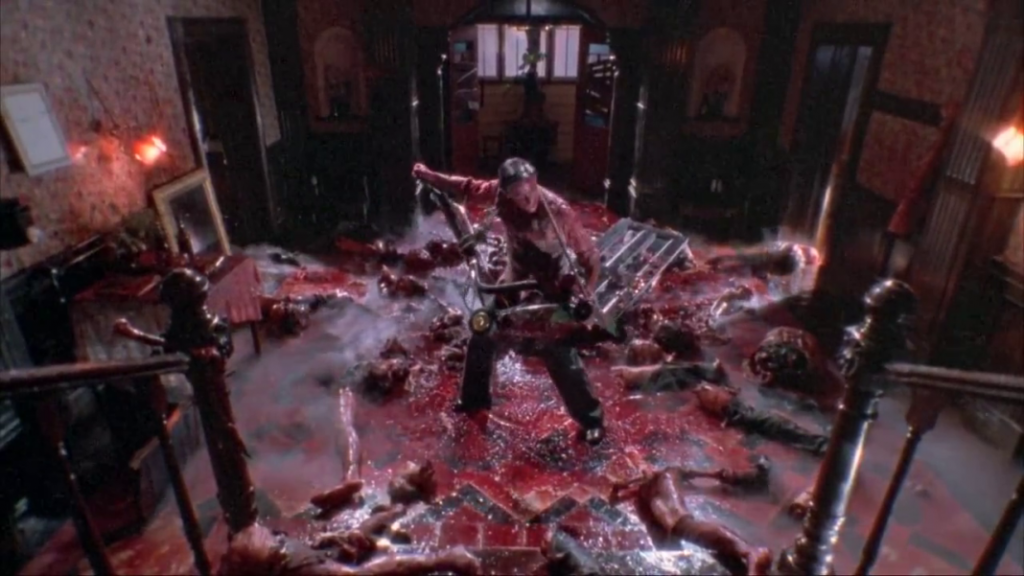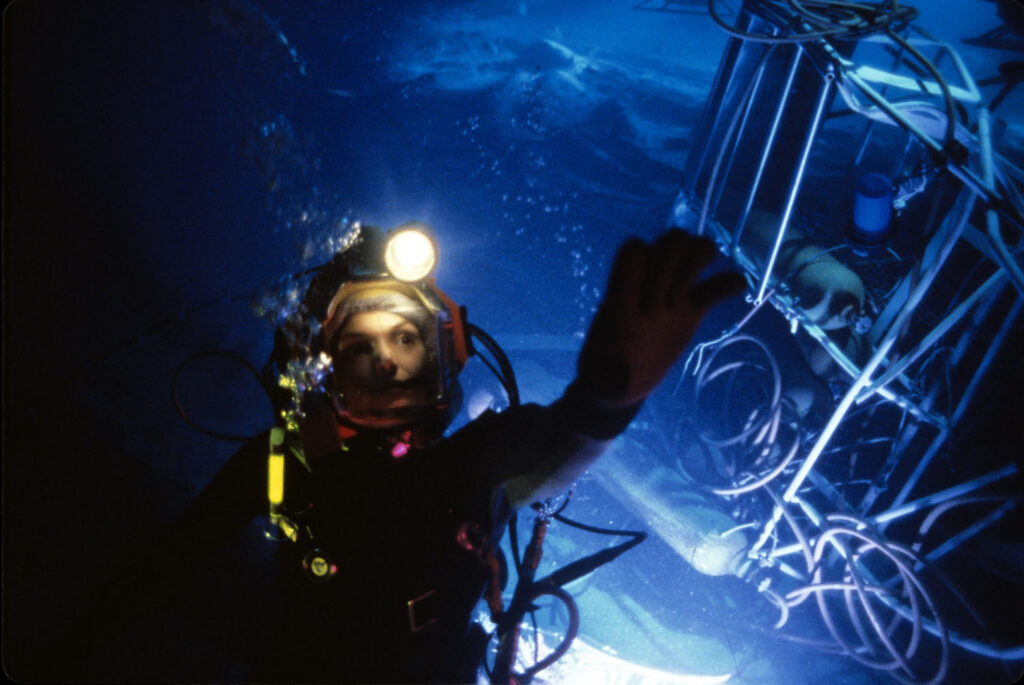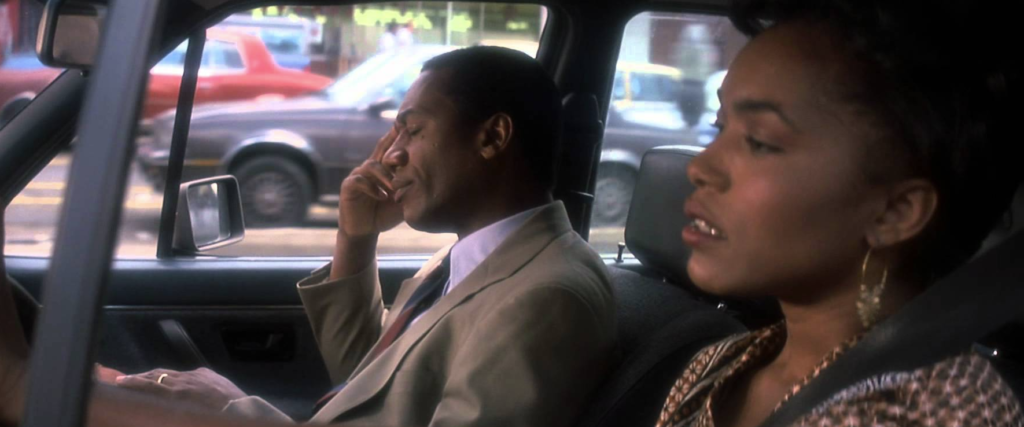If you are a fiend for physical media like we are, you may find yourself tracking the high-end restoration distributors like Criterion Collection, Shout Factory, Arrow Films, Vinegar Syndrome, etc. This ain’t a cheap hobby. I mean, it’s not like Japanese whisky aficionado expensive, or Funko expensive, or literally any microtransaction phone game expensive. But it does cost money (mitigated somewhat by biannual 50% off sales at Barnes & Noble and on the various motherships). And in addition to the material cost, there is a materiél cost in that physical media take up a damned large amount of space that would otherwise be free for other things. But the upshot is that you’ll have access to the film on demand for the life of the disc. It is a lot less annoying than wrangling 4+ streaming subscriptions.
So the bookshelves in our home are stuffed with loving restorations of genre classics like Ronin (1998) and Throne of Blood (1957), or Hal Hartley’s remarkable collection of self-distributed films via his Possible Films label. And each month brings about a new array of films that I have to restrain myself from purchasing. Last month, for instance, I gamely withstood a barrage which included The Last Waltz (1978) and Fire in the Sky (1993) and The Funhouse (1981); this month, it is Devil in a Blue Dress (1995) and Mississippi Masala (1991).
But sandwiched between the various restorations are the movies that are slipping through the cracks of time. Movies with nebulous distribution rights, or obstinate auteurs, or that have fallen under the nightmare dominion of the Mouse or Amazon, companies which actively seek to detach art from its historical context so that everything is an equally sized digital-only chunk of IP that the consumer never technically owns. (I’m not ranting about Disney today, I swear to god.) But regardless of the reason, there are lots of movies that are influential, are fondly remembered, or were successful in their day, but are nevertheless floating in the interzone haze between VHS release and modern restoration. You’ll find a lot of genre fare in this realm, although Vinegar Syndrome and Scream Factory and many others are slowly restoring these films for future generations.
This is part one of a multipart series. In each installment, I’ll focus on five movies for which I want 4k restorations. These are films that I love that are underseen due to lack of digital or disc availability, but that have been important in film history. I would love to upgrdade from half-rotted old bootlegs of these; I want to see them like they were seen on film when they first released. And I really want the accompanying commentaries, essays, and special features that are a staple of the high-end disc industry.

5. Braindead (or Dead Alive), 1992, Peter Jackson
There was a different world before Peter Jackson, Philippa Boyens, Fran Walsh et al. fundamentally reshaped the landscape with their blockbuster Lord of the Rings films. I swear, studios once made films that were not tied to other films (OK, grandpa, time to take your meds). Jackson was also a pioneer of the movie industry’s trend of hiring horror directors to helm big-budget projects. Nowadays no one blinks an eye at James Wan getting $200 million to make an Aquaman movie, but I recall no shortage of nervous anticipation when Jackson began work on the Tolkien adaptation.
Dead Alive is a perfect example of why. He swings for the fences with everything, and well, one also strikes out a lot when chasing home runs. Recall all of those incredible prosthetics and amazing practical effects from LOTR. Now imagine if the filmmaker employed those effects not within a $300 million, three-film PG-13 tentpole production, but instead was making an NC-17 gorefest on a shoestring budget with friends from around town. That is Bad Taste (1987) and Dead Alive.
I cannot convey the depths of ingenuity in this film, especially in how far they push past expectations and social conventions. The gore transcends genre, transcends narrative, and you just stare wide-eyed at the screen waiting for the next insanity. It is a genuine horrorshow balanced only by its unending whimsy, for every dismemberment draws a chuckle as often as a gasp.
However, to this point, I’ve only seen the movie on old DVDs. I would love to see the movie as crisply rendered as the day it was shot. Although in many ways, I don’t want to see it with high definition. Especially the custard scene.
4. The Abyss, 1989, James Cameron
Lightstorm Entertainment is James Cameron’s shingle. Under that shingle, he helmed vastly influential films like The Terminator and this. And for the past decade-plus, he has been working on technology to shoot Avatar 2 rather than sign off on blu ray transfers of any of the Lightstorm Entertainment films. This is extremely frustrating because The Abyss, Solaris (2002), True Lies (1994), and #2 on this list are fascinating films that beg to be stripped of the grit and grain and pixellation of the old analogue transfers.
If you’ve not seen The Abyss, it innovated the shooting of film underwater, and is among the most tense underwater thrillers you’ll see, alongside luminaries like Das Boot and The Hunt for Red October. It is also notable for being a nightmare production for the cast and crew, stuck in sets submerged inside of giant tanks for hours on end. You feel every bit of the tension and danger when watching the film, and now that the production is well in the past, that danger adds an additional thrill when watching the film.
3. The Driver, 1978, Walter Hill
Walter Hill is the among the most underserved figures in American genre film. He codified the buddy comedy with 48 Hours (1982) and videogames basically do not exist without George Miller’s Mad Max (1979, 1981, 1985, 2015) or Hill’s work on The Warriors (1979) and Streets of Fire (1984). And with The Driver, Hill did an American homage to Jean-Pierre Melville three years before Michael Mann’s Thief (1981).
The car chases through downtown LA have the same kinetic tension as
Ronin (1998) or
Bullitt (1968) but with the added (again, Michael Mann-style) layer of shooting them at night, because nighttime cityscapes are infinitely cooler than daytime ones. This is my favorite Ryan O’Neal performance, too, and while his career was probably hamstrung by alleged
other issues, he would have been well suited for the films of the 1980s. Isabella Adjani is not given much to do beyond looking incredible in a hat (but she does that quite well), and Bruce Dern plays one of his greatest sleazeballs as the detective who will do anything he can to close a case.
2. Strange Days, 1995, Kathryn Bigelow
The image above is clearer than any frame on the entire DVD, and even this picture is grainy. 🙁
This is truly the movie that I most want to see in a Criterion edition, if only so more people finally see it. This is one of the great thrillers of the end of the 20th century, and has a dazzling visual aesthetic of graffiti, neons, skyscrapers, drug dens, and nightclub culture. Every scene is interesting, and Bigelow pioneered action camera staging and editing. The SQUID recordings, done with handheld cameras and shot to look like single takes, put The Bourne movies to shame with their combination of intimacy and spatial coherence. And the story perfectly melds institutional racism, the drug trade, obsession with celebrity culture, obsession with true crime, and the feeling of living in a pressure cooker. And consider this a permanent thirst post for Angela Bassett, one of the greatest and most beautiful actresses of all time.
What a picture.
1. City of Hope, 1991, John Sayles
This series could be filled just by highlighting the films of John Sayles that await a blu ray release. While Criterion has a gorgeous restoration of Sayles’ most acclaimed film Matewan (1987), and Eight Men Out (1988) was popular enough to warrant a barebones blu ray release, most of the iconoclast’s films are on old DVDs that came from analog transfers (as in, it is the same primitive scan as was used to make VHS tapes three decades ago). City of Hope, his most emotionally devastating film, doesn’t even have that small comfort. The film has no disc release and the message boards where I used to track its someday-disc status haven’t been updated in over a decade. So I am not holding my breath.
I only lucked into seeing City of Hope because Amazon had it on their Prime streaming service randomly for a few months back in 2019 or 2020. May you someday find it on a streaming service too.
Waitin’ on a Disc is a series where we highlight notable films that have yet to be restored for blu ray or 4k release.




